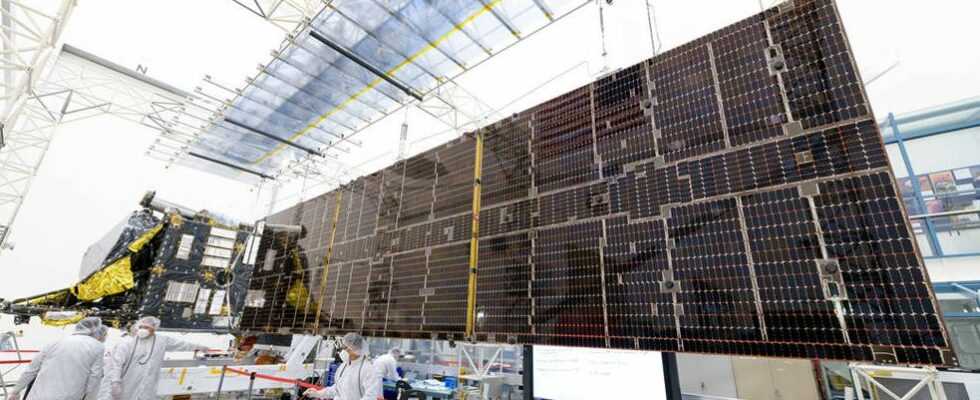The journey to the large metallic asteroid Psyche is getting closer. NASA teams at JPL tested the large 75 m² panels of the probe of the same name, essential elements for its journey of more than 2 billion kilometers. They only have a few months left to complete the tests…
And as her mission “cousin” Lucy showed, it’s better to try anything.
More power!
Installed on the Psyche probe, the solar panels are gently extended and tested… but not fully deployed! Their surface area of 75 m² and their cross configuration does not fit in the premises of the JPL laboratory in Pasadena (California)… After the successful tests, they have therefore already left for the large clean room of Maxar, which designed them, to a final series of tests.
The next time the solar panels will be reunited with Psyche will be in Florida’s Space Coast during the final weeks before its blast off atop a Falcon Heavy rocket, scheduled for next August. However, it was necessary to carefully check all the details this winter between the probe, which is completed, and its solar panels. No question of reliving, less than a year apart, an incomplete deployment like that of the Lucy probe: one of its two panels, which do not use the same technology, had not locked in place.
Towards the metalheads asteroid
The Psyche probe, with its electric Hall-effect ion thrusters, will need as much solar power as possible at the start of its mission, even if this type of engine is particularly efficient (and helped to maintain a reasonable mass of 2. 6 tons for the vehicle).
It will take four years to reach the asteroid 16/Psyche, an impressive block of 223 kilometers in diameter, extremely massive and mainly made of metal, which orbits in the belt located between Mars and Jupiter. The probe will then study it for about two terrestrial years, or even more if its instruments and its propulsion allow it. And the images in particular are already eagerly awaited!
Solar panels, good insulation, have you heard of…
To come back to the solar panels, they will be deployed one hour after take-off, in two sequences of 7 minutes and 30 seconds each. They will provide 21 kW of electrical power just after their launch and… a little less than 2 kW when they are at their maximum distance from the Sun. Because, yes, the further it goes from our star, the less the probe will be able to rely on its huge panels. Therefore, it was not only a question of providing highly efficient solar cells, but also of designing adaptable equipment.
For the teams on the ground now, the most difficult part is over: there remains the very tight schedule for the final tests, then the operations in Florida before wedging Psyche under its rocket fairing… not to mention the anxious wait for take-off. This is the price to pay for exploring an unprecedented celestial body.
Source:
NASA

5